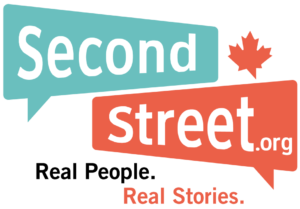SUN NEWS COLUMN: Teck mine is an enormous opportunity for Canada

37 NHL-sized arenas.
That’s what the proposed Teck mine in Alberta is roughly equal to in terms of cost. It’s an absolutely enormous project for our country, and it has passed all of the government’s regulatory hurdles. It’s hard to understand why the federal government is still humming and hawing about the project.
Consider that when an NHL arena is built, an army of workers is involved – from those who survey the site, excavate it, build the structure and furnish it to the accountants and lawyers who help pull the project together. This doesn’t even include the countless companies that make various materials for the facility.
But if you take the Teck mine’s price tag of $20.6 billion and divide it by the cost of the new NHL arena in Calgary ($0.55 billion), you can see the project is roughly 37 times larger.
The Teck oilsands mining project will require men and women to survey the site, build the mine’s infrastructure, extract resources, crush and sort the product, manage the work camps, transport people to and from the site regularly, sell the resources, handle the paperwork, accounting, and much more.
The company estimates it will employ 7,000 workers during construction and 2,500 workers once the mine is up and running.
What’s also important to note is that the project will help with more than Alberta’s struggling economy. As with most natural resource sector projects, workers will likely come from across the country, and Canada’s interconnected supply chain means that businesses and workers outside Alberta will receive orders for parts and materials that are used at the mine.
Jocelyn Bamford from Automatic Coating in Scarborough made this point when we spoke with her last year. She noted that when natural resource projects proceed in Alberta, they’ll often order parts from Ontario companies – companies that sometimes send those parts to her firm to be coated with a protective seal. Trucks will then transport the product to Alberta, with the driver likely making stops along the way for fuel, food, accommodations and more.
Furthermore, companies like Jocelyn’s often outsource different services, so the benefits continue to spread throughout the economy – for example, the company that cleans their door mats, a coffee service, legal work and others.
When one looks at the magnitude of the Teck project – and the potential benefits nationwide – it’s hard to understand what the political hold-up is at the federal level.
The proposed mine has already received approval from a federal-provincial bureaucratic panel, noting that it’s “in the public interest” to proceed.
Teck Resources is subject to paying a carbon tax and the company has even committed to eliminate its emissions by 2050. The 14 local Aboriginal bands around the mining site are also on board, seeing the project as a significant economic opportunity for their people.
And yet here we are again in Canada, putting another significant natural resources project in limbo by humming and hawing over it.
What readers should note is that even if Ottawa gives the project the green light, Teck still needs to make a final investment decision – yea or nay. It’s hard to understand why Ottawa isn’t rolling out the red carpet for the Teck mine project … 37 NHL arenas don’t come around very often.
Colin Craig is the President of SecondStreet.org, a new Canadian think tank.
This column was published in the February 9 , 2020 edition of the Toronto Sun, Ottawa Sun, Edmonton Sun and Calgary Sun.
Other Canadians Share Similar Experiences:
Don and Jackie, Winnipeg
Jerry and Becky, Calgary
Troy and Erika, Victoria
Jim Jones, Toronto
You can help us continue to research and tell stories about this issue by making a donation
or sharing this content with your friends. Be sure to sign up for our updates too!


